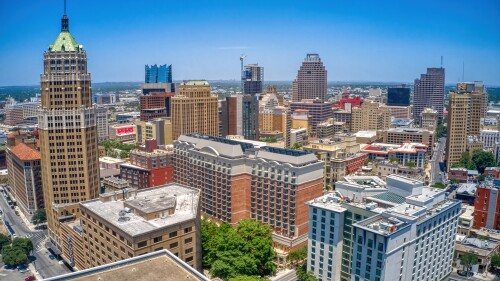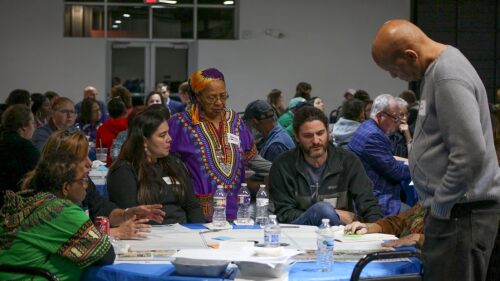In September 2018, a ULI Advisory Services panel (ASP) drew up strategic recommendations for joint urban development between the city of Wolfsburg and Volkswagen AG. The panel of international urban development experts has now presented the results in a detailed report.
Strong cooperation between the city of Wolfsburg and Volkswagen AG is already visible today—for example, in the joint public/private partnership, Wolfsburg AG, and the #WolfsburgDigital initiative. In order to further promote this cooperation through innovative impulses and independent know-how, the Urban Land Institute was commissioned to conduct an ASP in the city.
Stephanie Baden, executive director of ULI Germany, is convinced of the opportunities that such an ASP offers a city: “In times of high competition among cities, the development and exploitation of potential is of immense importance. Wolfsburg is moving and has recognized the value that external international expertise can bring to the city. The results of our ASP are very differentiated and show how meticulously the ULI experts proceeded.”
Kai-Uwe Hirschheide, planning councilor for the city, sees the joint work of the city of Wolfsburg and Volkswagen as confirmed by the results of the study: “We are on the right track with the Masterplan Nordhoffachse. There we can further develop the strong link between Volkswagen and Wolfsburg and make it structurally visible. In the competition between business locations, we must work together to drive forward such courageous and innovative projects. Around the Mittellandkanal, living and working should be attractive.”
Julius von Ingelheim, head of regional strategy and location development at Volkswagen AG, said: “The close historical ties between Volkswagen and the city are characteristic of Wolfsburg. Here at the Group and brand headquarters, we work together to make the city fit for the future and attractive. Wolfsburg is a young city, a strong business location with enormous potential and the best prerequisites for mastering the challenges of today and tomorrow. We have been convinced of this for a long time. The fact that we are on the right track with our joint projects, especially with #WolfsburgDigital, was again confirmed by the ULI’s final report. We are pleased to pick up on the impulses in a targeted manner in order to exploit the diverse opportunities offered by digitization, technologies, and mobility services for our employees and citizens.”
Manfred Günterberg, member of the board of management of Wolfsburg AG, said: “Better Together confirms the lived and successful practice of the city of Wolfsburg and Volkswagen working closely together on key urban development issues. We can only meet today’s and tomorrow’s challenges in partnership. With their recommendations, the experts show a feeling for the existing strengths and potential of our city. We will include these in our considerations for the ongoing plans—for example, for the Nordkopf and the Nordhoff axis.”
The panel has analyzed the current situation in numerous visits, interviews, and workshops with stakeholders and developed strategy recommendations from this. This report presents the results under the heading “Better Together” and contains five core theses.
The recommendations for action on urban development in Wolfsburg are as follows:
- Value the Gap
In Wolfsburg, the Mittellandkanal forms a fixed border north of the city center. As a result, many areas near the waterway are underused and cut off. The panel proposes, among other things, the opening of the canal promenade on the factory side and the relocation of Volkswagen offices to the city center. The city and the company must move together visibly.
- Develop the Core
The city center of Wolfsburg is divided into two subsections. Nordkopf and Porschestrasse have different urban characteristics. The panel proposes, among other things, the development of a lively, dense urban core around Nordkopf through more intensive mixed use and the creation of working and living spaces with innovative usage models. Additional central elements are a significant upgrading and integration of Porschestrasse and the rear areas through design while retaining the local character of the street and in particular the Südkopf.
- Link to Nature
The panel takes the view that Wolfsburg, with its special urban structure and the large green open spaces between village-like settlements, has a particularly attractive character for many people. The ULI experts propose, among other things, to effectively use the existing natural elements in the cityscape in order to create attractive, unspoiled local recreation areas and residential areas.
The panel suggests making green spaces the strategic brand core of the city for new residents as well. In doing so, it must be ensured that people of all ages and in different phases of life can be mobile without cars in the sometimes spatially dispersed neighborhoods.
- Advance Mobility
Automobility in particular is on the verge of upheaval. E-mobility, autonomous driving, and car sharing are some aspects of automobility nowadays. The panel sees Wolfsburg as a large testing ground for the early development and use of new forms of mobility in the city. Due to its structure, Wolfsburg is ideally suited to give this test case a realistic background. This development can also serve as a showcase for additional visitors and a blueprint for other cities.
- Pioneer Wolfsburg
The panelists in Wolfsburg sensed a strong pioneer spirit, which must be used even more intensively in the future. The cooperative model of a joint strategic approach between the city and Volkswagen should be further expanded. Volkswagen can consistently follow the path of pioneering technology, progressive production, and new mobility concepts and test them out in Wolfsburg. Within the framework of a strong master plan, the city should position itself as an innovation center and an attraction for the players in the knowledge sector.




